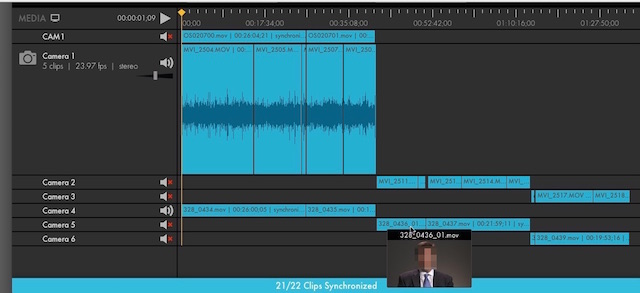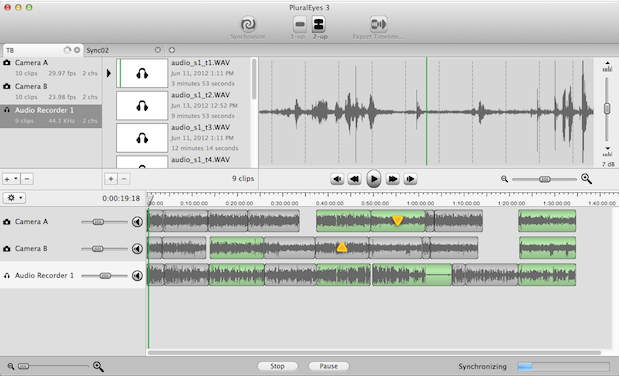
And by checking Level Audio, we are telling the application to adjust audio levels during its analysis so it can hear the audio better. The Change button allows us to tell it that all clips are in chronological order - a reasonable assumption, since we are shooting a performance. (Because there are breaks in timecode, creating a multiclip is not possible.) However, let’s give the application some help – click the Change button. In this case, we want to sync the clips to the Timeline. Because even if editing is possible, it takes forever to match up all the clips to the music. It took years for my crew to stop teasing me about it. Sigh… When I was very young, I once shot something like this. No matching timecode, in fact, a total break in timecode. The other two cameras were recording snatches of the piece, with constant stops and starts. Here we have what can most charitably be called a complete mess. No need for matching timecode or worrying that your DSLR audio sounds awful. Load both files into Final Cut and sync using PluralEyes. Record audio on the DSLR using the camera mike, and record good audio on your external audio gear. Note: This is a great technique to use for working with DSLR cameras, which are notorious for their poor sound quality. Important note: In order for this to work, you must record audio on every camera even it is only using the camera mike. Once the clips are in sync, it creates a multiclip and loads it into the Browser. PluralEyes listens to the audio in each clip and syncs the clips by aligning the audio. In this case, I want to create a multiclip to edit all three angles simultaneously, so I click Multiclip. It then displays a dialog asking if you want to Sync the clips in the Timeline – that is, to arrange them in the correct order so that the action they contain matches, or create a multiclip. It automatically looks into all open FCP project and finds the PluralEyes sequence. Now, go to the Applications folder and open PluralEyes. This MUST be the name of the sequence for PluralEyes to work and you can only have one project open at a time that contains a PluralEyes sequence. Note: I’ve created a sequence in the Browser called PluralEyes. Clips are only put into the timeline, nothing has been done to align them. Notice that each camera includes synced audio. This is where PluralEyes almost performs magic.įor instance, here three cameras are edited to the timeline. However, what happens if every camera is running different timecodes and you don’t have a good In or Out point?

A clapper slate or camera flash is used to set the In, or feeding all cameras common timecode are very common.
Pluraleyes 4 review professional#
Many times, for professional productions, this is fine.
Pluraleyes 4 review pro#
As well, when you use Final Cut Pro to build your multiclips, you can only synch them five ways using a common: The important thing to keep in mind with multiclips is that every clip in a multiclip needs to contain continuous timecode, as well as use the same compression codec, image size, and frame rate.

(By the way, the images in this article were provided by Singular Software.) Generally, images you want to synch as multiclips are recorded by multiple cameras at the same time. Multiclips first showed up in Final Cut Pro 5 and they allow you to synchronize and view multiple clips at the same time.
Pluraleyes 4 review software#
Let me give you a couple of examples about why this software can be very, very helpful. Then, the developer Bruce Sharpe called to tell me about it. I first learned of this software in a conversation with Roz McNulty. If you do a lot of multicam work, you need to check into PluralEyes, by Singular Software.


[ This article was first published in the February, 2010, issue of


 0 kommentar(er)
0 kommentar(er)
